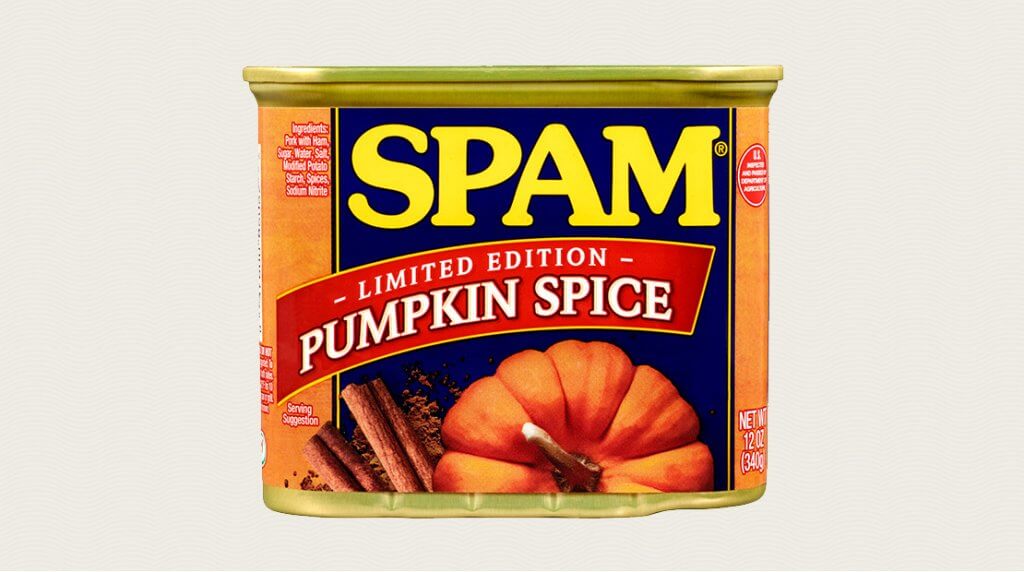As the temperature cools and the leaves change, items in grocery aisles and on restaurant menus shift to include autumn-inspired flavors. Hot cocoa and cinnamon are almost always present during the fall, but the infamous pumpkin spice flavor dominates the season and tends to overshadow its flavor counterparts. What created the fall frenzy for all things pumpkin spice?
Many consumers associate pumpkin spice with Starbucks, which introduced the pumpkin spice latte to the coffee chain’s menu in 2003 and is arguably the catalyst for the flavor skyrocketing in popularity. However, the original spice was created in 1934 by McCormick & Company to help home bakers make more flavorful pumpkin pies. The pumpkin pie spice blend is made up of cinnamon, ginger, cloves, nutmeg and allspice.
A survey by spices and herbs brand Spice Islands found during autumn that 66% of Americans say they have one to three pumpkin spice products per week. The data also found that nearly half of consumers even eat or drink more pumpkin spice offerings than chocolate in the fall. The success of this fall flavor — clearly driven by high consumer demand that goes beyond a temporary trend — can be seen in the introduction of more and more limited-edition CPG food items, as well as the Aug. 27 debut of Starbucks’ pumpkin spice latte, the fall drink’s earliest launch ever.
Even unexpected, nonsensical pumpkin spice items have proven to be successful. Hormel’s limited-edition pumpkin spice-flavored Spam sold out at both Walmart’s and Spam’s websites in a mere seven hours, resulting in a massive amount of media coverage for the brand. Nielsen data shows that dog food was the second-highest selling food or beverage category for pumpkin-flavored products during the year that ended Aug. 25, 2018, beating out the liquid creamer, ready-to-drink coffee and ice cream categories.
One component of pumpkin spice on its own — cinnamon — was predicted to be a trending flavor of 2019 by Michelin Guide. While the spice isn’t directly tied to the season, it’s often associated with fall. Coca-Cola launched Coca-Cola Cinnamon in the US this September, along with a new holiday flavor of Sprite. The Cinnamon Coke is a limited-edition flavor, explicitly drawing a connection between the spice and the season. Even if cinnamon can stand on its own as a dominant flavor during three other seasons, the bump it gets each autumn undoubtedly contributes to its position as a top flavor in 2019. And, in turn, the spice also boosts pumpkin spice’s continued dominance in consumers’ hearts.
What is it that keeps consumers returning to the pumpkin-spice craze each year without fail? Ultimately, “[p]eople just want something very comforting,” food scientist and CPG development firm Corvus Blue founder Kantha Shelke told CNBC Make It.
Director for Nutrition and Dietetics at St. Catherine University Megan Baumler said to Minneapolis, Minn.’s WCCO TV station, “It’s hard to say goodbye to summer. But, if we can latch onto something, it makes it easier to transition.” Consumers continue to enjoy that comfort as a way to cope with the changing seasons, and will pay more for the fall specialty items, meaning that brands will continue to provide returning and new pumpkin spice products to fill the ever-growing market for them.
Related stories:
- Today’s more veggies, less meat culture: What’s behind the momentum into the mainstream?
- What are the top trends in snacks and sweets?
- The changing nature of the frozen food aisle
_____________________________________
If you enjoyed this article, sign up for GMA SmartBrief or Restaurant SmartBrief to get news like this in your inbox, or check out all of SmartBrief’s food and travel newsletters as we offer more than 30 newsletters covering the food and travel industries from restaurants, food retail and food manufacturing to business travel, the airline and hotel industries and gaming.
